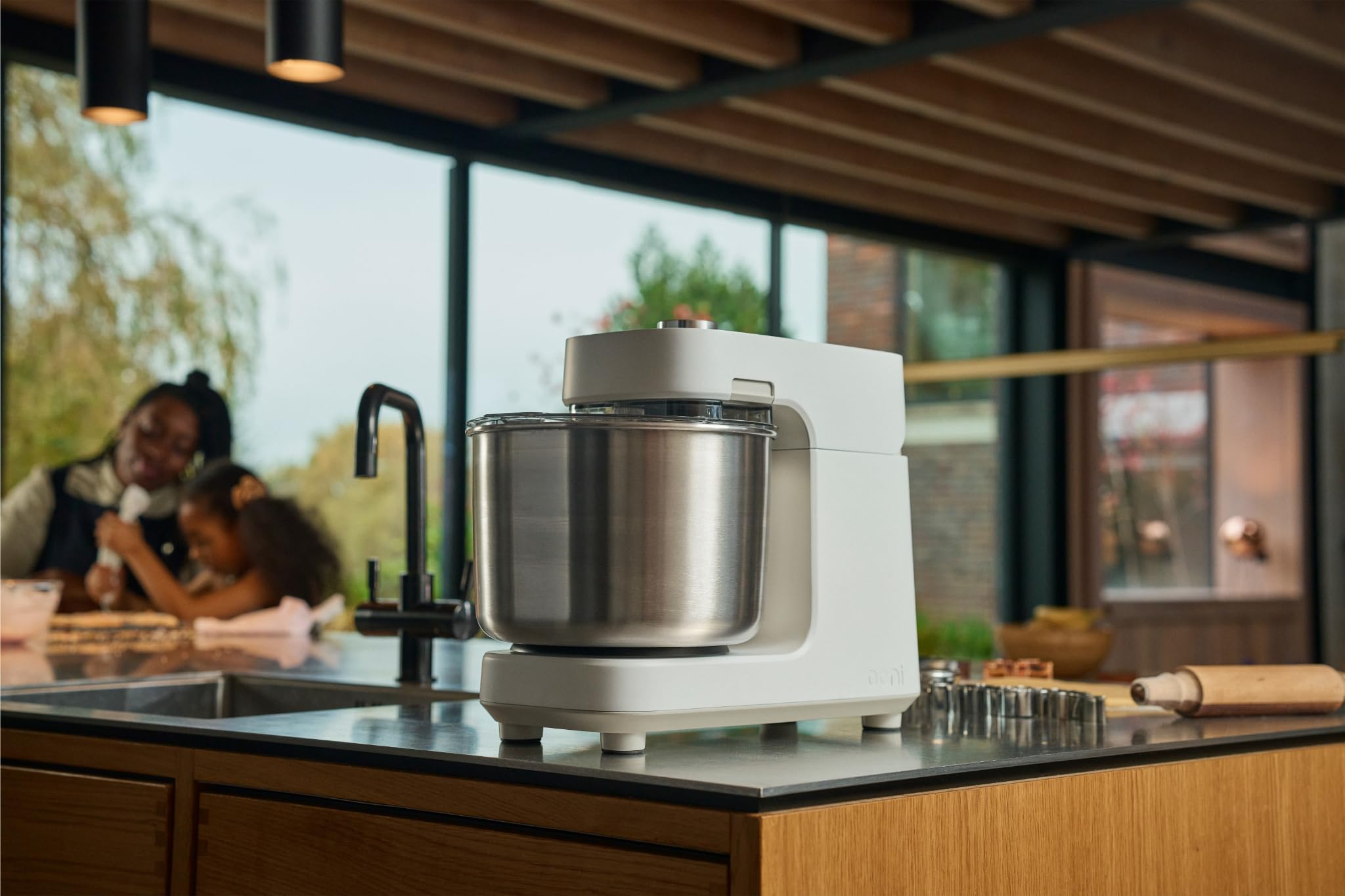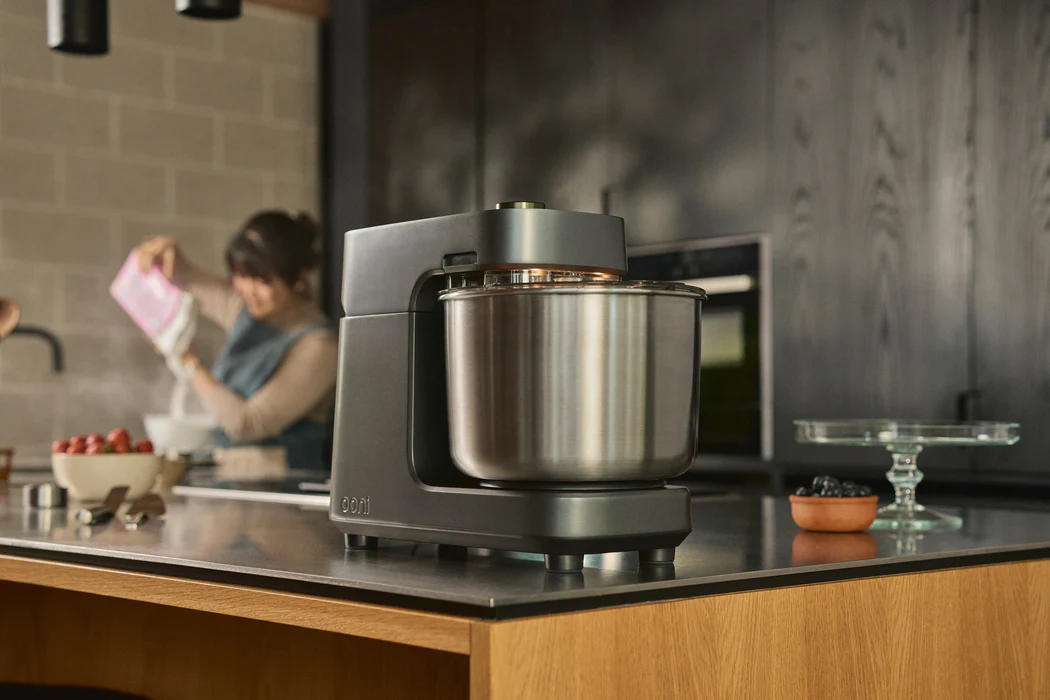Welcome to the heart of your kitchen’s powerhouse, the stand mixer. If you’ve just unboxed this beautiful piece of engineering, you’re probably staring at a few different metal attachments, wondering where to begin. Let’s talk about the undisputed workhorse of the group. Learning how to use a paddle attachment, also known as a flat beater, is the single most important step to unlocking your stand mixer’s true potential. Forget just cakes and cookies; this tool is a versatile champion that will revolutionize the way you cook and bake. Are you ready to move beyond the basics and truly master this essential kitchen appliance? Let’s dive in.
What is a Paddle Attachment, Anyway?
Before we get into the nitty-gritty, let’s clear up what this thing actually is. Think of the paddle attachment as the ultimate multi-tasker. Its open, frame-like design with crossbars is specifically engineered for thorough, heavy mixing without whipping too much air into the ingredients—a crucial distinction from its cousin, the whisk attachment.
Its primary job is to mix, cream, mash, and combine ingredients with incredible efficiency. While a whisk incorporates air for light and fluffy textures (like meringues) and a dough hook kneads heavy yeast doughs, the paddle attachment handles everything in between. It’s the go-to tool for about 80% of your stand mixer tasks.
As renowned pastry chef John Ackerman often says, “The paddle attachment is the engine room of your mixer. Mastering its use is the difference between a good home baker and a great one. It’s all about control and knowing its purpose: to combine, not to aerate.”
When to Use the Paddle Attachment: From Cookies to Pulled Pork
This is where the magic happens. The sheer versatility of the flat beater can be surprising. You’ll find yourself reaching for it far more often than you’d expect.
For Classic Baking: The Foundation of Fluffiness
This is the paddle’s home turf. If you’re an avid baker, this attachment will be your best friend.
- Creaming Butter and Sugar: This is arguably the most critical step for light, tender cakes and perfectly textured cookies. The paddle attachment expertly combines softened butter and sugar, creating thousands of tiny air pockets. This aeration provides lift and a delicate crumb in your final product.
- Combining Wet and Dry Ingredients: Once you’ve creamed your fats and sugars, the paddle attachment is perfect for gradually incorporating flour, cocoa powder, and other dry ingredients into your cake batter or cookie dough. Its design ensures everything is mixed evenly without overworking the gluten, which can lead to tough baked goods.
- Making Frostings and Fillings: From classic American buttercream to cream cheese frosting, the paddle blends ingredients to a smooth, luscious consistency. It combines the fat (butter, cream cheese) with powdered sugar and liquids without adding excess air, which can cause bubbles in your finished frosting.
- Biscuit and Scone Dough: When you need to “cut in” cold butter into flour for flaky biscuits or scones, the paddle attachment does the job quickly and effectively on a low speed, keeping the butter cold and creating those desirable flaky layers.
Beyond Baking: The Savory Surprise
Here’s where the “Pro” tips come in. Your paddle attachment is a secret weapon for savory dishes, saving you time and elbow grease.
- Shredding Cooked Meats: This is a game-changer. Place warm, cooked chicken breasts, a chunk of pork shoulder, or beef roast in the mixing bowl. With the paddle attachment on a low speed, you’ll have perfectly shredded meat for tacos, sandwiches, or casseroles in under a minute. Seriously, it’s that easy.
- Mashing Potatoes: Say goodbye to lumpy mash. After boiling and draining your potatoes, put them in the mixer bowl with butter and milk. The paddle attachment will mash them to a creamy, smooth perfection. Just be careful not to overmix, or they can become gluey.
- Making Meatloaf and Meatballs: Get perfectly combined meatloaf or meatballs without getting your hands dirty. The paddle attachment evenly distributes all your ingredients—from the ground meat and breadcrumbs to the eggs and seasonings—ensuring a consistent texture and flavor in every bite.
- Guacamole and Dips: Making a big batch of guacamole for a party? Let the paddle do the hard work of mashing the avocados before you fold in the other ingredients.

A Step-by-Step Guide: How to Use a Paddle Attachment Correctly
Using the attachment is simple, but a few key steps ensure you get the best results and protect your mixer.
- Safety First: Always make sure your stand mixer is unplugged before attaching or removing any accessory.
- Lock the Bowl: Secure the mixing bowl onto the base of the mixer. It should click or lock firmly into place so it doesn’t rattle during operation.
- Attach the Paddle: Raise the motor head (on a tilt-head model) or lower the bowl (on a bowl-lift model). Align the pin on the top of the paddle attachment with the slot on the beater shaft. Push the paddle upward and turn it counter-clockwise until it locks into place. It should feel secure.
- Check the Clearance (The “Dime Test”): This is a crucial pro-tip many people miss. To ensure your paddle mixes everything at the bottom of the bowl, you need the right clearance. Place a dime in the bottom of the empty bowl. Attach the paddle and turn the mixer on low. The paddle should gently push the dime around the bowl without forcefully scraping or missing it entirely. If it’s too high or too low, consult your mixer’s manual to adjust the beater height—usually with a small screw.
- Add Your Ingredients: Lower the motor head or raise the bowl. Now you can add your ingredients. For tasks that involve adding dry ingredients to wet, it’s best to add them gradually while the mixer is on its lowest speed.
- Choose the Right Speed: Start low and go slow. Here’s a general guide:
- Speed 1-2 (Stir/Low): For combining dry ingredients, shredding meat, or starting any mixing process to avoid splatters.
- Speed 3-5 (Medium-Low to Medium): Perfect for mashing potatoes, mixing cookie doughs, and creaming butter and sugar. This is the sweet spot for most paddle attachment tasks.
- Speed 6-8 (Medium-High): Used for beating or creaming mixtures to a very light and fluffy state, such as for certain frostings.
- Speed 9-10 (High): Rarely used with the paddle attachment, as it can incorporate too much air or overwork ingredients. Reserve these speeds for the whisk.
Paddle Attachment vs. Whisk vs. Dough Hook
Still confused about which tool to use? Let’s break it down simply.
| Attachment | Primary Action | Best For |
|---|---|---|
| Paddle Attachment | Mixing, Creaming, Beating, Mashing | Cookie dough, cake batter, frostings, mashed potatoes, shredded meat, meatloaf. |
| Wire Whisk | Whipping, Aerating | Egg whites, meringue, whipped cream, light sponge cakes (like angel food). |
| Dough Hook | Kneading | Bread dough, pizza dough, pasta dough, any heavy yeast-based dough. |
Think of it like this: if the recipe calls for “creaming,” “beating,” or “mixing” a normal-to-heavy batter, the paddle attachment is your answer.
Cleaning and Maintenance Tips
Keeping your paddle attachment in top shape is easy.
- Coated Paddles: Most standard flat beaters that come with brands like KitchenAid are coated with a white or gray polyester finish. These are typically top-rack dishwasher safe.
- Burnished Aluminum Paddles: Some models come with uncoated, shiny aluminum attachments. Never put these in the dishwasher! The harsh detergents will cause them to oxidize and turn a dull, chalky gray. Always wash these by hand with warm, soapy water.
- Flex Edge Beaters: These popular upgrades feature a flexible silicone scraper on one or both sides. They are fantastic for reducing the need to stop and scrape the bowl. Most are dishwasher safe, but check the manufacturer’s instructions.
To be safe, a quick hand wash is always the best way to extend the life of any attachment.
Frequently Asked Questions (FAQ)
Q: Can I use the paddle attachment to knead bread dough?
A: It’s not recommended. While it might work for a very wet, slack dough, the paddle attachment is not designed for the heavy work of developing gluten in bread dough. Using it can put significant strain on your mixer’s motor. Always use the dough hook for kneading.
Q: What is the difference between a standard flat beater and a flex edge beater?
A: A flex edge beater is a paddle attachment with a flexible silicone or rubber edge on one side. This edge scrapes the sides of the bowl as it mixes, significantly reducing the need to stop and manually scrape down ingredients. It’s a highly recommended upgrade for avid bakers.
Q: My paddle attachment is chipping. Is it safe to use?
A: If the coating on your paddle attachment is chipping, it’s best to replace it. While the coating is typically food-safe, you don’t want flakes of it ending up in your food. This is often caused by dropping the attachment or it scraping against the bowl (a sign your clearance needs adjusting).
Q: Why are my ingredients sticking to the bottom of the bowl and not getting mixed?
A: This is almost always a sign that your beater-to-bowl clearance is too high. Perform the “dime test” mentioned above and adjust the mixer head’s height according to your user manual. This will ensure the paddle reaches all ingredients.
Final Thoughts
Mastering how to use a paddle attachment is your ticket to getting the absolute most out of your stand mixer investment. It’s more than just a tool for baking; it’s a versatile kitchen assistant that can handle tasks from delicate batters to hearty savory preparations. By understanding when to use it, how to use it correctly, and how to care for it, you’re not just making food—you’re creating better food with more consistency and less effort. Now, go on and get mixing! We’d love to hear about your creative uses for the paddle attachment in the comments below.